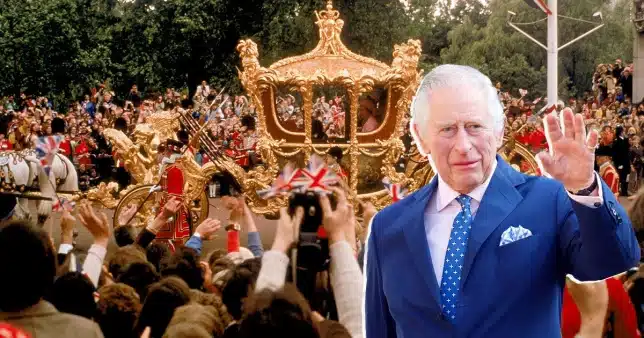It will be considerably harder than expected for royal superfans expecting to see Charles on the day of his coronation.
The procession’s route is much shorter than anticipated, according to the royal officials who have just announced it.
The newly crowned King will travel 1.3 miles from Westminster Abbey to Buckingham Palace, passing via Trafalgar Square before turning and proceeding down The Mall directly to his royal residence.
In contrast, Queen Elizabeth II’s 1953 procession took a winding five-mile path past Trafalgar Square onto Regent Street, Oxford Street and Park lane, allowing huge crowds of wellwishers to see her.

Unlike his late mother, who covered more ground by travelling in a loop, Charles will travel home along the same route taking him to Westminster Abbey ahead of the ceremony.
The shortened route will drastically reduce the number of people able to get a direct view of the monarch, although those who make it will likely get to see him twice.
Latest London news
Even some who camp out may struggle to nab a good spot, reports suggest.
According to The Telegraph, organisers have ruled out using a ticketing or ballot system for spectators, advising wellwishers to simply ‘plan in advance’.
Those who miss out will be able to watch the procession at any of 30 special outdoor screenings taking place across the UK.
They include Cardiff Castle, Belfast City Hall and Manchester’s Piccadilly Gardens.
Charles’ wish for a pared-back, cheaper ceremony have led to a number of other differences from the last coronation, including a much smaller number of invited guests from the House of Lords and Commons.
Elizabeth rode the entire route in the 260-year-old Gold State Coach – which is suspended on leather straps – and famously described the bumpy experience inside as ‘horrible.’
Charles and Camilla instead travel to the Abbey in the more modern and comfortable Diamond Jubilee State Coach, which has shock absorbers, before completing the procession in the Gold State Coach.
Many elements of the ceremony remain rooted in tradition, such as the appearance of an ivory sceptre in the hands of Camilla the Queen Consort.
This is despite Charles’ longstanding campaign as Prince of Wales to end the illegal trafficking of animal parts like rhino horn and elephant tusk.
A Buckingham Palace spokeswoman said: ‘As with any historical collection of its size, it is to be expected that the Royal Collection includes items that contain ivory as this reflected the taste at the time.’

